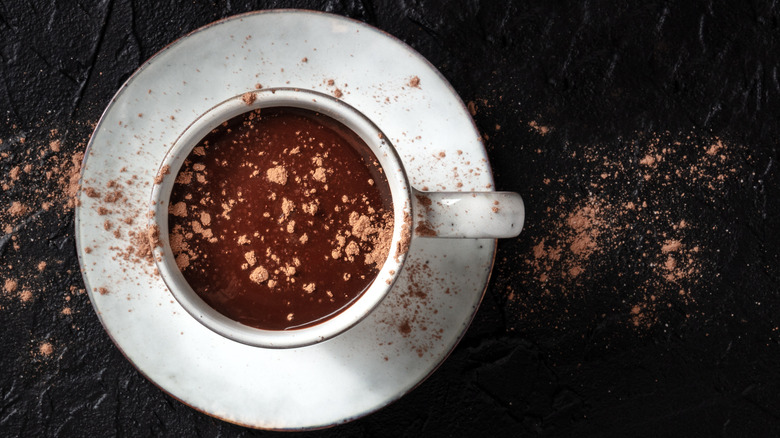What Gives Italian Hot Chocolate Its Famously Thick Texture?
If you've visited Italy from the U.S., chances are you noticed some differences when it comes to food: For example, pizza will never be made with pineapple, and while it was technically invented in Italy, Alfredo pasta is extremely uncommon. If you happen to try a hot chocolate (this is more common in the north of the country, in the Piedmont region around Turin), there's another thing you may have noticed: Italian hot chocolate is thick. Like, really thick — arguably closer to a soup. As a result, it feels comforting — it's so thick it's filling, and feels much richer than a powder-dissolved-in-water (or milk) hot chocolate you might get elsewhere. (Real sticklers might argue that this is not hot chocolate, but hot cocoa.) In any case, how do you make it this way?
The good news is you'll only need one ingredient, and chances are you have it in your pantry: cornstarch. No matter whether you make the hot chocolate with water or milk, cornstarch will get it to that almost pudding- or mousse-like texture. For a recipe with around two cups of liquid, you might add up to two tablespoons of it (some recipes call for less). You'll typically mix all your other ingredients together and heat them, and save the cornstarch for the end, not long before you serve it. But there are some pointers to know when making hot chocolate this way.
How to use cornstarch correctly in hot chocolate
If you've ever used cornstarch as a thickener in recipes like stews or sauces, you may have had trouble with it getting all clumpy when you add it into the mixture. Italian cafés will often have machines that constantly stir the hot chocolate to avoid lumps, but that's probably excessive for a casual at-home hot chocolate. While you can usually whisk cornstarch lumps out, it's probably better to avoid them in the first place. To do this, mix the cornstarch separately with a small amount of milk so it forms a slurry that you'll add to the larger pot of milk. If you're using milk, try to avoid boiling it, as this can also add lumps.
If you're concerned about cornstarch adding any unwanted flavor to your hot chocolate, don't be: Cornstarch is more or less flavorless. While some might argue that it has a slight earthy taste, it will be imperceptible among the double-hit of chocolate and sugar that gives this creamy beverage its flavor.
Finally, there's one other ingredient that may also help thicken your Italian-style hot chocolate, and it's pretty intuitive: chocolate. Many Italian recipes call for both cocoa powder and chopped-up chocolate which will melt down into the water or milk. While it's probably the cornstarch that adds most of the thickness, using real chocolate instead of just powder will help, and it'll make things richer.

